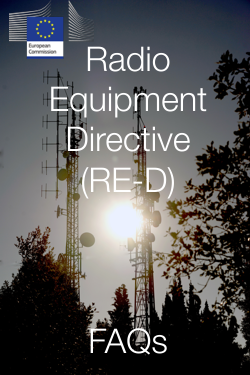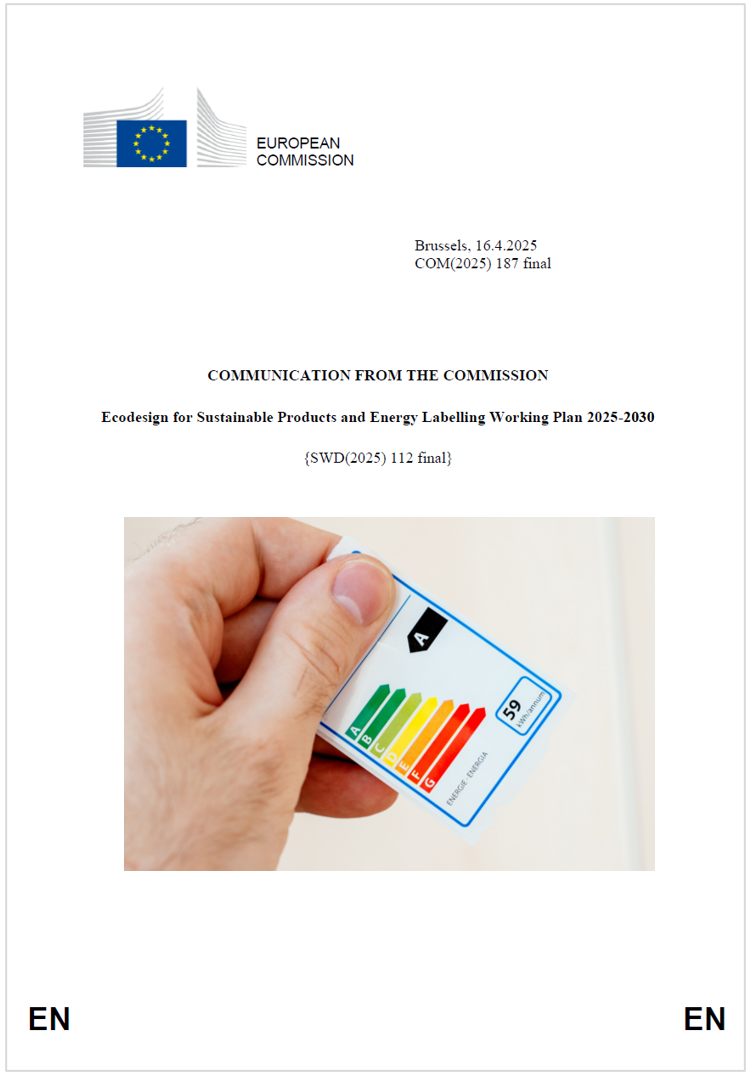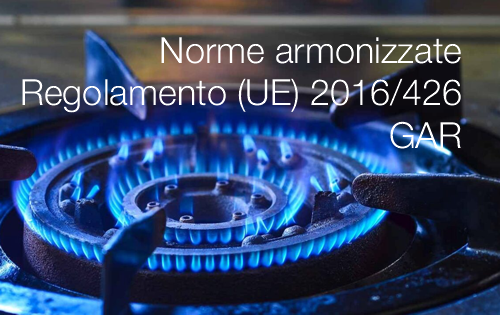Informazione tecnica HSE / 25 ° anno
/ Documenti disponibili:
45.592
/ Documenti scaricati: 34.505.779
/ Documenti scaricati: 34.505.779
EU, 03.04.2020
Guidance on medical devices, active implantable medical devices and in vitro diagnostic medical devices in the COVID-19 context
Medical devices are defined by Article 1 of the Medical devices directive (93/42/EEC), Active implantable medical devices are defined by Article 1 of the Directive on active implantable medical devices (90/385/EEC), In vitro diagnostic medical devices are defined by Article 1 of the Directive on in vitro diagnostic medical devices (98/79/EC),
Question 2: What are the legal requirements for placing such medical devices on the EU market and how should the compliance with them be verified and documented?
In order to place a medical device of any of the three types on the market, the manufacturer has to comply with the provisions of the applicable Directive mentioned under Q1.
Based on the level of potential hazard inherent in the type of device concerned the devices are classified in risk classes for which different types of conformity assessment procedures are applied.
For low risk devices, the manufacturer ensures and declares conformity with the applicable requirements. The Directives contain essential requirements that the device must satisfy and certain requirements on the technical documentation to be prepared by the manufacturer.
Medium and high risk devices (such as masks supplied in a sterile condition, ventilators, or diagnostic self-tests) require an intervention of a notified body which would in most cases need to assess both the manufacturer’s quality management system and the specific device technical documentation prior to issuing a certification. Notified bodies are listed in the NANDO (New Approach Notified and Designated Organisations) Information System,
Question 3: How can standards be used under the legislation?
The Directives lay down essential requirements on safety and performance of the devices they cover, but do not prescribe any specific mandatory technical solutions for the manufacturing and design of the devices. Therefore, the manufacturer can choose which technical solution to use to meet these essential requirements.
The Directives offer the possibility for manufacturers to rely on specific technical solutions, which are detailed in harmonised European standards or parts thereof. The references to these harmonised standards are published in the Official Journal of the European Union. Where a manufacturer chooses to follow a harmonised standard, the product is presumed to be in conformity with the applicable essential health, safety and performance requirements. The harmonised standards under the Medical devices directive most relevant for the public health crisis associated to the COVID19 outbreak are listed in annex 1.
Most European standards for medical devices have their origin in international ISO or IEC standards. The annex 2 to this Q & A contains a table indicating the recognition of international standards under the legal systems of the member jurisdictions of the International Medical Device Regulators Forum (IMDRF).
Question 4: Where can standards be obtained?
Normally, manufacturers must purchase the standards they need from the national members of the European standardisation organisations in the field (CEN and CENELEC), i.e. the national standardisation bodies.
However, to ensure that European industry can quickly respond to the increased demand of medical devices generated by the public health crisis associated to the COVID-19 outbreak, the Commission has agreed with the European standardisation organisations that several standards are made freely and fully available by the national standardisation bodies.
Manufacturers can download these standards without cost from the online catalogues of the national standardisation bodies.
Question 5: Due to the urgency caused by the COVID-19 outbreak, is there a possibility to derogate from the normal conformity assessment procedures?
The directives prescribe that, on duly justified request, a Member State may, in the interest of protection of health, authorize the placing on the market within the territory of the Member State concerned, of individual devices for which the conformity assessment procedures haven´t been carried out yet. The public health crisis associated to the COVID-19 outbreak is to be considered justified circumstance for that purpose.
In addition, the Commission Recommendation (EU) 2020/403 on conformity assessment and market surveillance of 13 March 2020 provides recommendations to Member States with regard to personal protective equipment and medical devices for protection (such as surgical masks, exploration gloves and some gowns). The recommendation is accompanied by a guidance document on conformity assessment procedures for protective equipment.
When assessing the need for a derogation, the national competent authority in a Member State may consider factors such as:
1. the degree of criticality of the use of the device for the protection of health;
2. availability of suitable substitutes;
3. documentation of compliance with a harmonised standard or other specific technical solutions ensuring fulfilment of the applicable essential requirements laid down in the relevant Directive;
4. review of reports of tests performed by competent bodies;
5. indications from vigilance and/or market surveillance.
The derogation should be temporary and the period of validity limited to what is strictly required for rendering the device compliant with the legislation or, if earlier, when suitable substitutes can be expected or the critical needs will no longer be present.
If Member States identify on the market devices for which the conformity assessment procedures have not been carried out and no valid derogation decision has been issued, they should take appropriate market surveillance measures in accordance with the relevant directive. Recent experience indicates that there is, in addition, a need to be attentive to falsified certificates and counterfeit devices.
Question 6: Is it necessary to register the devices?
In most cases there is an obligation for a manufacturer who makes devices available on the market to inform the competent authorities of the Member State in which he has his registered place of business, about the address of the registered place of business and the description of the devices concerned. Manufacturers outside the EU must have an authorised representative in the EU who then informs Member State competent authorities of the above.
Question 7: How can I get in touch with the national competent authorities?
The national competent authorities are listed here: https://ec.europa.eu/growth/sectors/medical-devices/contacts_en
Question 8: Off label use of a medical device
A medical device should be used as intended by the manufacturer and described in the instructions for use. If a device is used in any other way, this is considered ‘offlabel’ use. Off-label use of a device could entail serious risks.
When it is deemed necessary to use an existing medical device for a purpose or in a way that is different from that intended by the manufacturer, risks and benefits to the patient must be carefully assessed.
The assessment may typically include steps or factors such as:
- a documented risk assessment on the use of the device
- consideration of ethical and legal implications
- implementation of suitable precautions to minimise the risk
- reviewing the risk assessment at suitable periods
- obtaining approval from the national competent authorities when required.
Question 9: Will the new Regulations on medical devices and in vitro diagnostic medical devices replace the three current Directives?
The new Regulations (MDR and IVDR) will replace the current Directives 90/385/EEC and 93/42/EEC on 26 May 2020 and 98/79/EC on 26 May 2022.
In light of the public health crisis associated to the COVID-19 outbreak and with patient health and safety as a guiding principle, Commission adopted, on 3 April, a proposal to postpone the current application date of 26 May 2020 of the Medical Devices Regulation (MDR) for one year is ongoing. The Commission intends to submit the proposal to the co-legislators (the European Parliament and Council) in early April 2020 with the aim to have the proposal adopted before the end of May.
Information about the new Regulations is available at https://ec.europa.eu/growth/sectors/medical-devices/new-regulations_en
N.B. These Guidelines are intended solely for facilitating the application of Council Directives 90/385/EEC, 93/42/EEC and 98/79/EC. However, the Commission accepts no responsibility or liability whatsoever with regard to the information in this document. This information provided in this document is:
- of a general nature only and is not intended to address the specific circumstances of any particular individual or entity;
- not necessarily comprehensive and complete;
- sometimes referring to actions of external actors over which the Commission services have no direct control and for which the Commission cannot assume responsibility;
- not of professional nature or should not be read as legal advice;
- to the extent that these Q&A:s may interpret legislation, the Commission's position is without prejudice to any interpretation of this legislation that may be issued by the Court of Justice of the European Union.
Annexes:
1. Harmonised standards under 93/42/EEC - Medical devices directive with relevance to COVID-19
2. Table indicating recognition of international standards under the legal systems of the member jurisdictions of the International Medical Device Regulators Forum (IMDRF) – based on information provided in 2019, updated with regard to EU Harmonised standards April 2020: https://ec.europa.eu/docsroom/documents/40606
Fonte: EU
Collegati:

Commissione Europea, 28 aprile 2017
FAQS RE-D:
What is the objective of the RE-D?
Which equipment will now fall within the scope of RE-D?
When does the RE-D start ap...

ID 23480 | 18.04.2025 / In allegato (EN)
Il 16 Aprile 2025, la Commissione europea ha adottato il piano di lavoro 2025-2030 p...

ID 24569 | 11.09.2025 - Elenco Norme armonizzate Regolamento apparecchi a gas Reg. (UE) 2016/426 GAR
Elenco consolidato Norme armo...
Testata editoriale iscritta al n. 22/2024 del registro periodici della cancelleria del Tribunale di Perugia in data 19.11.2024